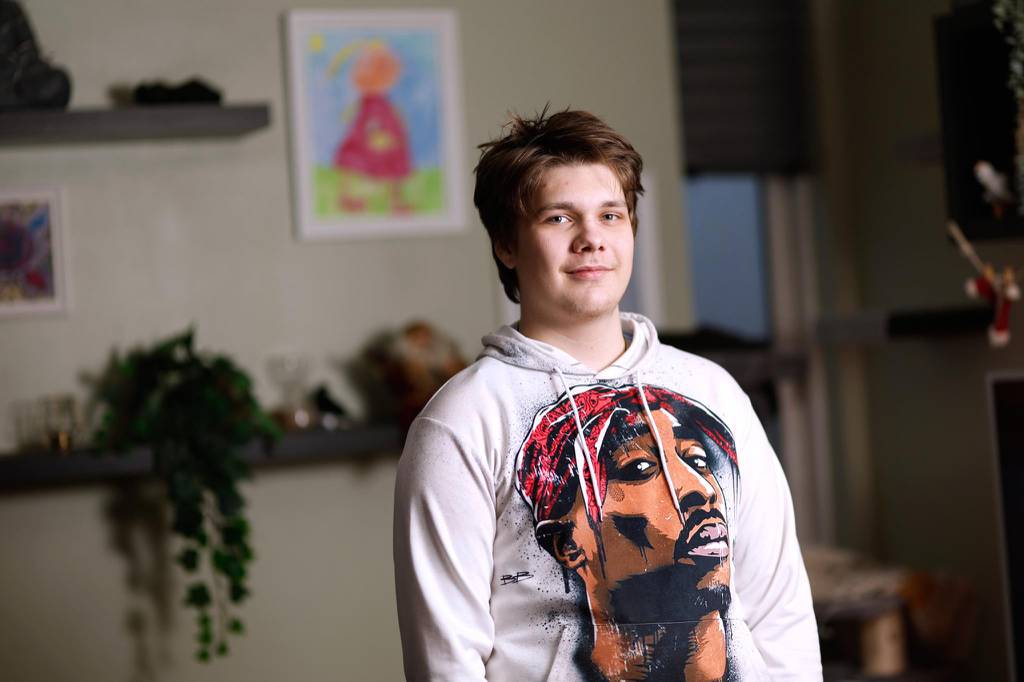"I was kept asleep for nine days"
On the World Day of Remembrance for Road Traffic Victims, which is today, November 17, attention is focused on the dangers of drivers falling asleep at the wheel. Studies show that sleep and fatigue are among the main causes of fatal traffic accidents, and the focus is, therefore, a given.
For example, this is considered a possible reason for two accidents last year where people died; meeting cars collided after the driver of one of them fell asleep. Both of these accidents happened in the West; one in Snæfellsnes in July and the other in December on the ring road near Skipanes in Melasveit. In addition, 21 were seriously injured for the same reason.
Everything happened very suddenly
"Accidents are always such that various lessons can be learned from them," says Hagalín Ágúst Jónsson. He was the driver of the second vehicle involved in the collision in Melasveit on December 13 last year. This was around 2.30 pm. Jónsson was there with his girlfriend heading north and the driving conditions were decent. They were in a Volvo 40 and a small car of the Toyota Yaris type came towards them, which suddenly swerved to the left in their way.
Almost the entire front end of the Toyota was hit, and the Volvo's front end and left side were heavily damaged. "It all happened very fast. Suddenly the car came towards us on the opposite side of the road so I swerved the Volvo to the side, which was not enough. The cars collided very hard and I immediately realized that something terrible had happened. The steering wheel of my car bent at an angle and the dashboard went to my chest," Jónsson says, who remained conscious the whole time.
Two seconds before the accident
This incident was investigated by the Road Accident Investigation Committee and a report on it was published a few days ago. It says that the route of the Toyota vehicle from the north has a gentle left turn before reaching the long straight road to the intersection with Skipanes.
"On that stretch of the road, the Toyota was driven over the center line of the road, onto the opposite side of the road, and the front part of the Toyota and the left front part of the Volvo collided together. During the collision, the Toyota turned 180 degrees and stopped in the northbound lane. The Volvo passenger car was thrown to the side and out of the way at the intended collision site," says the investigative committee.
There was an elderly woman in the Toyota. She suffered multiple injuries in the accident and died as a result. Both cars were taken for investigation. Information from the Toyota's airbag computer was analyzed and it states that two seconds before the accident, the woman driving the car showed a reaction to the imminent danger and moved her foot off the gas pedal and onto the brake, which was too late.
"It is likely that the driver was not paying attention while driving, possibly unconscious or asleep for a few seconds after she drove out of the curve and onto the straight section of the road," say the researchers.
Rescue teams and police quickly arrived on the scene and began operations. Also, a helicopter from the Coast Guard took Jónsson and his girlfriend Íris Helena to the hospital, but they were both badly injured. Jónsson broke his ankle, thigh, and forearm, and Íris Helena was broken on both thighs. In the helicopter, Jónsson lost consciousness and there was a long and tough struggle, during which he was in danger of dying.
Will never fully recover
"I was kept asleep for nine days after the accident, and it was only on St Thorlak’s Day, December 23, that I had an operation where my hand and ankle were repaired. It had been difficult to wake me up because the bone marrow got into the bloodstream, up to the head, and formed a plug there. That's why we had to be careful," Jónsson says, who was in the hospital until February this year. He then underwent several weeks of rehabilitation at the National Hospital's Grensás recovery ward, but today he regularly exercises according to the physiotherapist's instructions.
"Bones are still healing and steel is in the arm, thigh, and ankle." I will probably never fully recover. My stamina is less than it used to be and I have to avoid all exertion. Then I still haven't recovered my short-term memory, which is part of the mental trauma that I and my whole family suffered there," Jónsson concludes.









